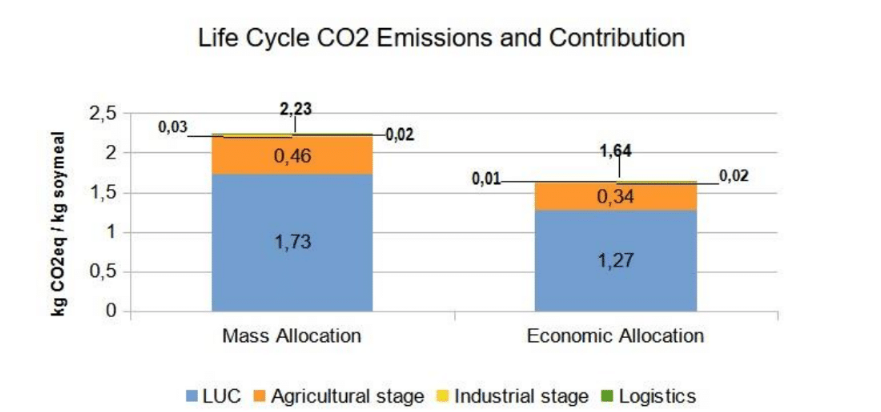Carbon Footprint Calculation Project: Main Outcomes
When forests are cleared to make way for agriculture (Land Use Change – LUC), the carbon stored in the trees is released to the atmosphere in the form of Carbon Dioxide (CO2). These emissions must be accounted for in Life-Cycle Assessment (LCA) studies.
Several calculation methods and approaches or Carbon Footprint accounting have been proposed and are being used. So far, customers have been forced to calculate using default data, which, in most cases, creates a disadvantage for them. In Europe, for instance, information on Carbon Footprint and LCA is becoming more relevant for feed and food producers, while in certain countries it is already obligatory to deliver this data.
According to LCA rules and standards (EU Product Category Rules for Life Cycle Analysis[1]), the contribution of LUC can be excluded from an LCA of a crop if the farm can prove “no conversion” over a 20-year period. Brazilian soybeans have very high CO2 footprints due to carbon losses that occurred through land conversion and land transformation – these losses are accounted for in the life cycle of soybean production as Land Use and Land Cover Change (LULUC). The current system is unfair towards organizations that invest in sustainably produced and land conversion free raw materials, because data on the twenty years period have not been gathered yet regarding all supply farms, there being an associated cost to produce evidence through georeferenced systems. Besides, the accounting for farms that cleared land less than 20 years ago, but before a given cut-off date, has not been developed yet. For realistic emission values one would need to calculate the footprint regarding year and size of area cleared.
How can carbon footprint be calculated in a fair way, considering the organizations that invest in sustainably produced and land conversion free raw materials?
ProTerra certified material is 100% free from deforestation and conversion of natural habitats[2], protects High Conservation Values (as defined by HCV Resource Network[3]) and comes from environmentally and socially responsible soy production[4].
In December 2019 the ProTerra Foundation launched the Carbon Footprint Calculation Project[5] together with FEE (Espaço Eco Foundation[6]), to develop a tool to calculate Greenhouse Gases (GHG) emissions, comprising methods to estimate the Land Use Change. The project´s main goal was to develop a framework for data collection and a tool for calculation of Carbon Footprint indicator, based on the BRLUC[7] method.
This shall differentiate certified from non-certified products, by offering buyers high-quality data for their CO2 calculations: transparency on environmental footprint reduces risks and offers differentiation opportunities towards efficient and sustainable soybean production in the whole value chain.
Outcome
The calculator is EU-PEF (European Commission Product Environmental Footprint) compliant, based on the BRLUC methodology, calculating the results per state. This approach has been used because it is scientifically supported and reflects the Brazilian reality.
There is a consensus that there is room for improvement in terms of applying more primary data, but its intrinsic complexity and the challenges due to COVID-19 (no physical visits to farms in Brazil are allowed) cannot hold the launch of the calculator.
Values have been calculated for the states where ProTerra certified material is grown: Minas Gerais (MG), Mato Grosso (MT), Goiás (GO) and Paraná (PR).
The results represent the average agricultural (Approach 1) and industrial profile:
Carbon Footprint – agricultural profile based on BRLUC method:

Industrial profile (soymeal):
